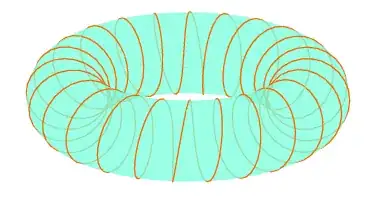Prove that the following map is smooth and analyse its image as the real number $\alpha$ varies (how does it look like? Is it a submanifold?)
\begin{align*} f_{\alpha}:\mathbb{R}&\to\mathbb{S}^1\times\mathbb{S}^1\\ t&\mapsto (e^{2\pi it}, e^{2\pi \alpha it}) \end{align*}
I've managed to prove that $f_{\alpha}$ is smooth and that $\text{Im}(f_{\alpha})$ is a closed curve on the torus $\Leftrightarrow \alpha\in\mathbb{Q}$. But I'm having trouble to formalize whether or not it is a submanifold of the torus. I actually don't know if it is true when the image is not a closed curve. How can I solve this?
